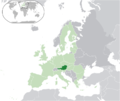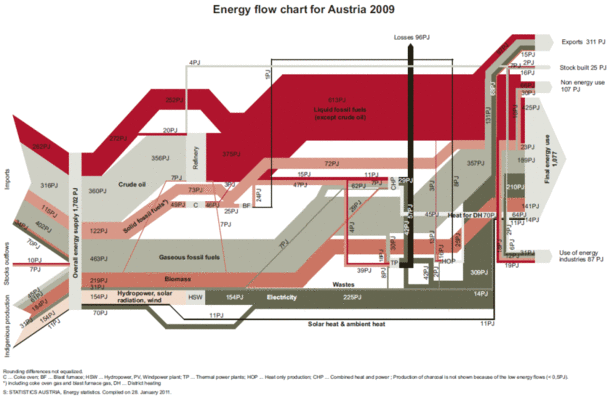Click here to register!
Austria Energy Situation
Capital:
Vienna
Region:
Coordinates:
48.2000° N, 16.3500° E
Total Area (km²): It includes a country's total area, including areas under inland bodies of water and some coastal waterways.
83,879
Population: It is based on the de facto definition of population, which counts all residents regardless of legal status or citizenship--except for refugees not permanently settled in the country of asylum, who are generally considered part of the population of their country of origin.
9,041,851 (2022)
Rural Population (% of total population): It refers to people living in rural areas as defined by national statistical offices. It is calculated as the difference between total population and urban population.
41 (2022)
GDP (current US$): It is the sum of gross value added by all resident producers in the economy plus any product taxes and minus any subsidies not included in the value of the products. It is calculated without making deductions for depreciation of fabricated assets or for depletion and degradation of natural resources.
470,941,926,751 (2022)
GDP Per Capita (current US$): It is gross domestic product divided by midyear population
52,084.68 (2022)
Access to Electricity (% of population): It is the percentage of population with access to electricity.
100.00 (2021)
Energy Imports Net (% of energy use): It is estimated as energy use less production, both measured in oil equivalents. A negative value indicates that the country is a net exporter. Energy use refers to use of primary energy before transformation to other end-use fuels, which is equal to indigenous production plus imports and stock changes, minus exports and fuels supplied to ships and aircraft engaged in international transport.
63.54 (2015)
Fossil Fuel Energy Consumption (% of total): It comprises coal, oil, petroleum, and natural gas products.
65.66 (2015)
Introduction
Energy Efficiency
- see report by the Austrian Energy Agency on Energy Efficiency Policies and Measures in Austria (2009)
Policy Framework, Laws, Regulations - Recent Developments
Energy Strategy[1]
In 2010, the two ministries (economy and environment) presented, after a lenghty stekeholder process, the Strategy Austria (engl Kurzfassung) (2).pdf Austria Energy Strategy (2010), which is founded on three principles:
- Security of energy supply
- Energy efficiency
- Renewable energies
On the basis of these principles, Austria’s energy strategy is primarily directed at enhancing energy efficiency at every level where energy is supplied and consumed. Furthermore, it is necessary to improve security of supply and crisis provision for every source of energy and to strive to achieve as high a degree of energy autonomy as possible, while at the same time taking into account cost efficiency.
-> also see IEA (2007) report: Energy Policies of IEA Countries - Austria Review 2007
Renewable Energy Mandate[2]
Mandatory targets set by the Directive on the Promotion of the use of energy from renewable sources:
- 34 % share of RES on the gross final energy consumption of energy in 2020.
- At least 10% share of renewable energy in final consumption of energy in transport by 2020.
Indicative Target set by the RES- electricity European Directive from 20015:
- 78.1 % share of RES on gross electricity consumption by 2010.
Indicative Target set by the European Biofuels Directive from 2003:
- Biofuels consumption of 5.75% of final energy consumption of petrol and diesel use for transport in 2010.
Legal Framework on the Promotion of renewable energies in Austria:
- Green electricity Act
- Subsidy Directive
- Green Electricity Regulation 2011
Further Information
- Statistics on Energy by Statistik Austria
- Austrian Energy Agency
- Austrian Federal Ministry for Environment
- Austrian Federal Ministry for Economy, Families and Youth
- Austrian Federal Ministry for Transport, Innovation and Technology
- Fuel Price Data Austria






















